Jaguar I-Pace VS Mercedes EQB – Specs, Efficiency & Price Comparison
Find out now which car fits your needs better!
The Jaguar I-Pace (SUV) is powered by a Electric engine and comes with a Automatic transmission. In comparison, the Mercedes EQB (SUV) features a Electric engine and a Automatic gearbox.
When it comes to boot capacity, the Jaguar I-Pace offers 638 L, while the Mercedes EQB provides 495 L – depending on what matters most to you. If you’re looking for more power, you’ll need to decide whether the 400 HP of the Jaguar I-Pace or the 292 HP of the Mercedes EQB suits your needs better.
There are also differences in efficiency: 25.20 kWh vs 15.20 kWh. In terms of price, the Jaguar I-Pace starts at 79200 £, while the Mercedes EQB is available from 45900 £.
Compare all the key specs now and find out which model fits your lifestyle best!
In the electrifying face-off between the Jaguar I-Pace and the Mercedes EQB, both luxury EVs showcase their unique strengths. The Jaguar I-Pace offers a dynamic driving experience with its powerful dual motors and distinctive styling, appealing to those seeking sporty performance and cutting-edge design. Meanwhile, the Mercedes EQB provides a spacious, family-friendly interior with advanced safety features, making it an attractive option for practicality without sacrificing luxury.
Jaguar I-Pace
The Jaguar I-Pace represents a remarkable fusion of cutting-edge electric performance and iconic British luxury. With its sleek design and spacious interior, this model redefines what one can expect from an electric vehicle in terms of style and comfort. Its impressive driving dynamics and advanced technology make it a standout choice for those looking to make a statement on the road.
details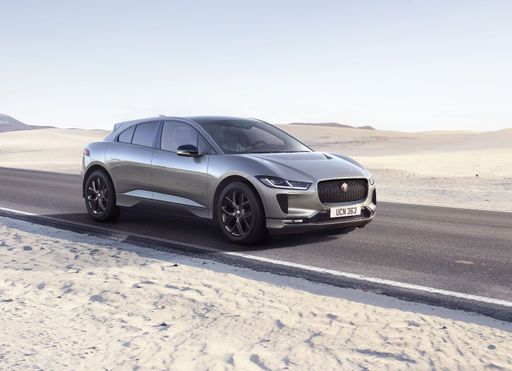 @ media.jaguar.com
@ media.jaguar.com
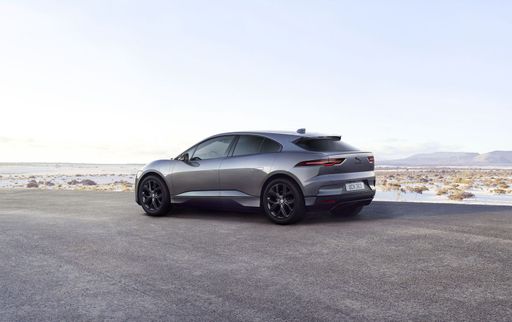 @ media.jaguar.com
@ media.jaguar.com
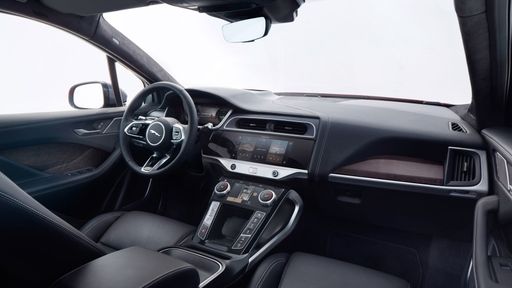 @ media.jaguar.com
@ media.jaguar.com
Mercedes EQB
The Mercedes-Benz EQB is an all-electric compact SUV that seamlessly blends practicality with modern luxury. Its sleek design and spacious interior make it an attractive option for families seeking both style and function. With advanced technology and impressive range capabilities, the EQB is a testament to Mercedes-Benz's commitment to sustainable mobility.
details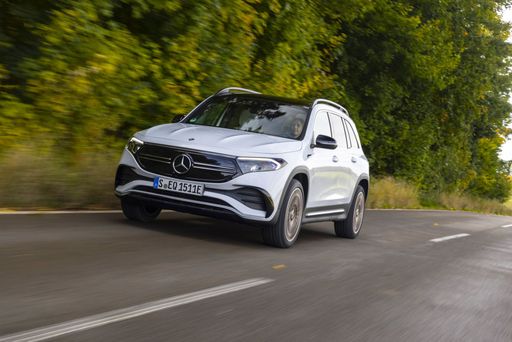 @ group-media.mercedes-benz.com
@ group-media.mercedes-benz.com
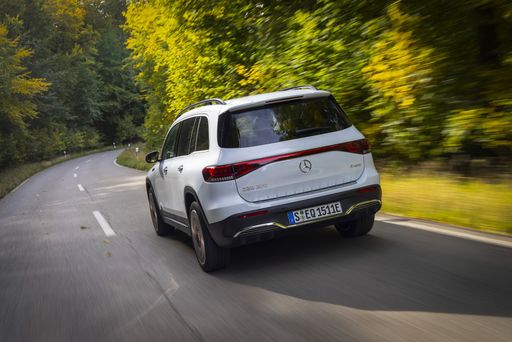 @ group-media.mercedes-benz.com
@ group-media.mercedes-benz.com
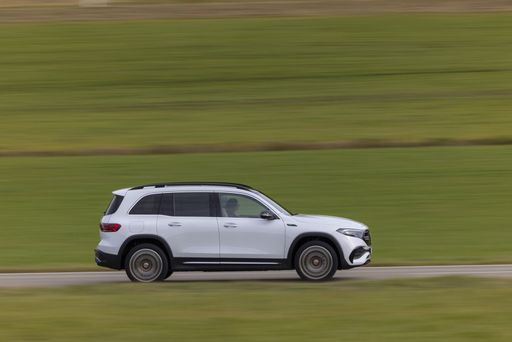 @ group-media.mercedes-benz.com
@ group-media.mercedes-benz.com
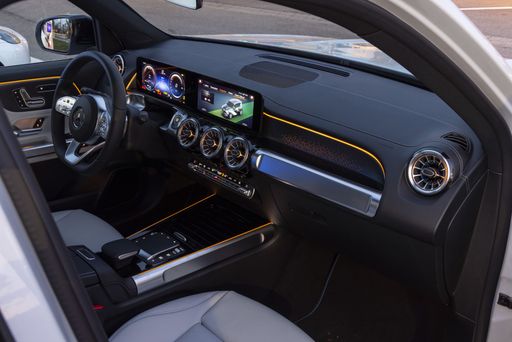 @ group-media.mercedes-benz.com
@ group-media.mercedes-benz.com
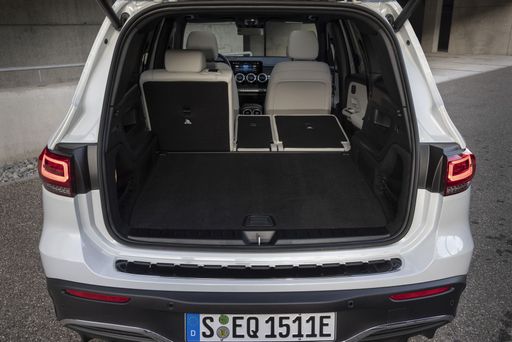 @ group-media.mercedes-benz.com
@ group-media.mercedes-benz.com
The Battle of Luxury Electric SUVs: Jaguar I-Pace vs. Mercedes EQB
As the electric SUV market continues to evolve, two models are making significant waves: the Jaguar I-Pace and the Mercedes EQB. Both offer a premium driving experience, cutting-edge technology, and the allure of their prestigious marques. But how do they stack up against each other? Let's dive into a detailed comparison of these two electric titans.
Design and Aesthetics
The Jaguar I-Pace presents a sleek and futuristic design, characterized by its sporty silhouette and elegant lines. Its dimensions, measuring 4682 mm in length, 2011 mm in width, and 1566 mm in height, create a dynamic and agile appearance.
In contrast, the Mercedes EQB offers a more traditional SUV design with a length of 4684 mm, a width of 1834 mm, and varying heights between 1654 and 1689 mm, depending on the model. Though slightly more conservative, the EQB’s design still exudes the classic Mercedes sophistication.
Performance and Technical Specifications
Performance enthusiasts will admire the Jaguar I-Pace, which delivers an exhilarating 400 HP and 696 Nm of torque, enabling it to accelerate from 0 to 100 km/h in just 4.8 seconds. This all-wheel-drive vehicle also boasts a maximum speed of 200 km/h.
Meanwhile, the Mercedes EQB comes with a range of power options from 190 HP to 292 HP, and torque figures ranging from 385 Nm to 520 Nm, depending on the specific variant. With acceleration times varying from 8.9 seconds to 6.2 seconds for the more powerful models, the EQB reaches a top speed of 160 km/h.
Electric Range and Efficiency
In terms of range, the EQB impresses with options spanning from 445 km to 533 km on a single charge, depending on the configuration. The EQB achieves a consumption rate between 15.2 and 17.3 kWh/100 km, reflecting its efficiency.
The Jaguar I-Pace offers a notable range of 469 km, with a consumption of 25.2 kWh/100 km. Its larger battery capacity of 84.7 kWh supports its robust range and performance capabilities.
Interior and Practicality
With a trunk capacity of 638 liters, the Jaguar I-Pace provides ample space for the family adventurer. Despite a curb weight of 2226 kg, it supports a payload of 444 kg, making it a practical choice for various needs.
The Mercedes EQB, while slightly smaller with a trunk capacity of 495 liters, offers versatility with its front-wheel and all-wheel-drive options, catering to different driving preferences. The curb weight ranges from 2105 to 2170 kg, supporting a payload of 435 kg.
Cutting-Edge Features and Innovation
Both models incorporate state-of-the-art technology, including automatic transmission through a reduction gearbox and a user-centric infotainment system. Their commitment to sustainability is highlighted by achieving an impressive CO2 efficiency class of A and emitting zero CO2.
Conclusion: Choosing Your Champion
The decision between the Jaguar I-Pace and the Mercedes EQB comes down to personal preferences. If you seek exhilarating performance wrapped in a sleek design, the Jaguar I-Pace may be the ideal choice. For those prioritizing varied range options, efficiency, and the prestige of Mercedes-Benz, the EQB could serve as the perfect electric SUV.
Ultimately, both vehicles stand as excellent representations of modern automotive innovation, paving the way for the future of electric mobility.

|

|
|
|
|
Costs and Consumption |
|
|---|---|
|
Price
79200 - 85500 £
|
Price
45900 - 58900 £
|
|
Consumption L/100km
-
|
Consumption L/100km
-
|
|
Consumption kWh/100km
25.20 kWh
|
Consumption kWh/100km
15.2 - 17.2 kWh
|
|
Electric Range
469 km
|
Electric Range
468 - 535 km
|
|
Battery Capacity
84.70 kWh
|
Battery Capacity
70.50 kWh
|
|
co2
0 g/km
|
co2
0 g/km
|
|
Fuel tank capacity
-
|
Fuel tank capacity
-
|
Dimensions and Body |
|
|---|---|
|
Body Type
SUV
|
Body Type
SUV
|
|
Seats
5
|
Seats
5
|
|
Doors
5
|
Doors
5
|
|
Curb weight
2226 kg
|
Curb weight
2105 - 2170 kg
|
|
Trunk capacity
638 L
|
Trunk capacity
495 L
|
|
Length
4682 mm
|
Length
4684 mm
|
|
Width
2011 mm
|
Width
1834 mm
|
|
Height
1566 mm
|
Height
1654 - 1689 mm
|
|
Payload
444 kg
|
Payload
435 kg
|
Engine and Performance |
|
|---|---|
|
Engine Type
Electric
|
Engine Type
Electric
|
|
Transmission
Automatic
|
Transmission
Automatic
|
|
Transmission Detail
Reduction Gearbox
|
Transmission Detail
-
|
|
Drive Type
All-Wheel Drive
|
Drive Type
Front-Wheel Drive, All-Wheel Drive
|
|
Power HP
400 HP
|
Power HP
190 - 292 HP
|
|
Acceleration 0-100km/h
4.80 s
|
Acceleration 0-100km/h
6.2 - 8.9 s
|
|
Max Speed
200 km/h
|
Max Speed
160 km/h
|
|
Torque
696 Nm
|
Torque
385 - 520 Nm
|
|
Number of Cylinders
-
|
Number of Cylinders
-
|
|
Power kW
294 kW
|
Power kW
140 - 215 kW
|
|
Engine capacity
-
|
Engine capacity
-
|
General |
|
|---|---|
|
Model Year
2023
|
Model Year
2024 - 2025
|
|
CO2 Efficiency Class
A
|
CO2 Efficiency Class
A
|
|
Brand
Jaguar
|
Brand
Mercedes-Benz
|
Jaguar I-Pace
Discovering Innovation: The Jaguar I-Pace
The Jaguar I-Pace represents a bold leap into the future of automotive design and engineering, blending luxury, performance, and sustainability into one stunning package. As Jaguar’s first all-electric model, the I-Pace not only showcases their commitment to innovation but also sets a new standard in the electric vehicle market.
A Powerhouse on Wheels
Under the sleek body of the Jaguar I-Pace lies an electric motor capable of delivering an impressive 400 PS (294 kW). This translates into an exhilarating driving experience, with the I-Pace accelerating from 0 to 100 km/h in just 4.8 seconds. The instant torque provided by the motor ensures unparalleled responsiveness, making every drive thrilling.
Efficient Performance
Despite its powerful performance, the Jaguar I-Pace is equally impressive in terms of efficiency. Boasting a consumption rate of just 25.2 kWh per 100 km and an electric range of up to 469 km, it’s clear that Jaguar has engineered this model to deliver uncompromised efficiency. With a noteworthy CO2 emission of 0 g/km, the I-Pace stands as a testament to the possibilities of sustainable luxury vehicles.
Advanced Engineering and All-Wheel Drive
The Jaguar I-Pace features an all-wheel-drive system, offering superior handling and stability, crucial for a vehicle with such performance credentials. The combination of dual electric motors and a sophisticated reduction gearbox enhances its prowess on the road, ensuring a smooth and responsive drive regardless of terrain.
A Design to Impress
One look at the Jaguar I-Pace, and its embodiment of modern elegance is unmistakable. With dimensions of 4682 mm in length, 2011 mm in width, and 1566 mm in height, this SUV is both spacious and stylish. The interior is equally inviting, with premium materials and high-tech features offering a luxurious driving experience for up to five passengers.
Technological Marvel
The I-Pace is packed with cutting-edge technology, from its intuitive infotainment system to its advanced safety features. The vehicle's aerodynamic design not only enhances its aesthetic appeal but also contributes to its efficiency and range, making it a marvel of modern engineering.
Sustainability Without Compromise
Jaguar positions the I-Pace as a trailblazer in eco-friendly driving, earning an A-class CO2 efficiency rating. It underscores a commitment to sustainability without compromising the luxury and performance that aficionados have come to expect from the Jaguar brand.
Conclusion
The Jaguar I-Pace is more than just an electric vehicle; it represents a future where performance, luxury, and sustainability coexist seamlessly. With its groundbreaking design and technology, the I-Pace not only captures the essence of Jaguar's rich heritage but also paves the way for the brand's journey into the electric era.
Mercedes EQB
Introducing the Mercedes-Benz EQB: A New Era in Electric SUVs
The Mercedes-Benz EQB is a striking testament to the innovative prowess of Mercedes-Benz in the realm of electric vehicles. As an SUV designed for the future, the EQB merges luxury with sustainability, offering a remarkable driving experience complemented by state-of-the-art technology.
Powerful Performance and Efficient Design
Under the bonnet, the EQB is powered by an electric motor that produces between 190 to 292 PS, translating to 140 to 215 kW. This powerful engine allows the EQB to achieve a 0-100 km/h acceleration in just 6.2 to 8.9 seconds, rivaling many other vehicles in its class.
Fuel efficiency remains at the forefront of the EQB's design, with a consumption rate ranging from 15.2 to 17.3 kWh per 100 km. This efficiency ensures the vehicle maintains an impressive electric range between 445 to 533 km per charge, giving drivers the confidence to embark on longer journeys without constant recharging.
Cutting-Edge Technological Innovations
The EQB is packed with innovations that make driving an intuitive and seamless experience. The vehicle boasts a state-of-the-art emissions rating of zero CO2 per km, proudly placing it in the A class of CO2 efficiency. The integrated automatic transmission, specifically the Reduktionsgetriebe, offers smooth transitions and enhances overall driving comfort.
Roomy Interior and Premium Features
Step inside the EQB to find a spacious and luxurious interior, capable of accommodating five passengers comfortably. With a luggage capacity of 495 litres, this SUV caters to both adventure and everyday needs. The EQB comes available in several exquisite lines, including AMG Line Advanced and Electric Art Advanced Plus, ensuring there's a version to match every style preference.
Safety and Reliability
Safety has always been a priority for Mercedes-Benz, and the EQB continues this legacy. With an all-wheel-drive option on certain models, enhanced traction and stability are provided across a variety of driving conditions. Furthermore, the EQB's substantial weight range from 2105 to 2170 kg adds to its robust and stable feel on the road.
Pricing and Ownership Costs
The price of the EQB starts at €53,514, and the top-end models can go up to €68,734. Mercedes-Benz offers several financing options to suit various budgets, with running costs calculated at approximately 47.4 to 55.9 cents per kilometre, making it an economically viable choice for the environmentally conscious driver.
The Mercedes-Benz EQB is more than just a vehicle; it represents a shift towards a more sustainable future, without compromising on luxury or performance. Whether you're navigating city streets or venturing into the countryside, the EQB is engineered to deliver an exceptional driving experience every time.
The prices and data displayed are estimates based on German list prices and may vary by country. This information is not legally binding.
